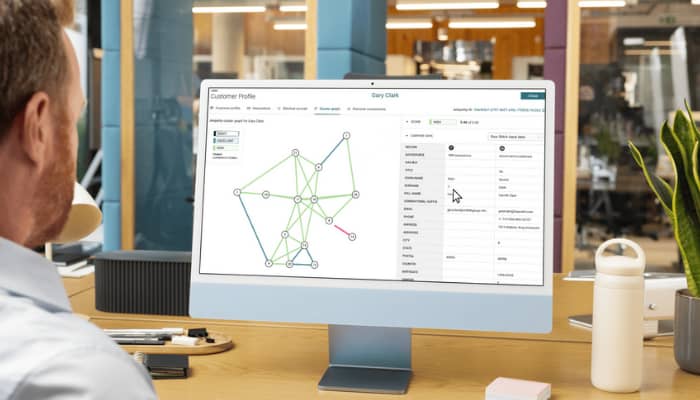How we work has changed dramatically over the past several years. We’re now witnessing the trend of an increasing number of executive-level marketers and data and analytics professionals establishing themselves as fractional CMOs. These experts work with multiple clients to provide them with curated access to their experience and expertise at a lower cost than a full-time C-suite hire.
But a successful fractional executive marketing hire needs a strategic approach. We spoke to several marketing experts, most of whom are fractional themselves, working in Asia-Pacific, to share their insights on how businesses can leverage this model of work, its benefits and the expectations that go along with it.
Fractional CMOs reflecting today’s rapidly shifting digital and AI landscape
The fractional trend underscores the rapidly evolving digital marketing ecosystem, where agility, specialised expertise, and strategic flexibility are paramount, says Michelle Carden, senior regional marketing lead of B2B SaaS for APAC at Surreal.
“It reflects a broader shift towards project-based, outcome-driven talent models that prioritise specialised skills, especially for complex scenarios like international market expansion and region-specific marketing strategies,” she says.
The trend shows how fast things are changing, adds Nick Rameka, managing director at JungleMapper. Especially given marketing and digital spaces are more complex than ever, with constant innovations like AI and data analytics.
“Businesses need flexibility to keep up with shifting consumer behaviours and technologies, he says. “Fractional roles reflect this need for agility and results-driven strategies. It also ties into the gig economy, where businesses are more open to hiring experts for specific projects rather than full-time roles.”
The rise of fractional leadership reflects a fundamental shift in how businesses need to operate today, Billy Loizou, APAC area vice president at Amperity explains. Even a $5M company now requires the same sophisticated marketing stack that was once only accessible to enterprises – think CDP platforms, marketing automation, advanced analytics, and AI-driven personalization. The complexity has grown exponentially.
“Take a typical mid-sized e-commerce company. They’re juggling multiple data sources, trying to create unified customer profiles, managing omnichannel campaigns, and implementing predictive analytics – all while competing with larger players who have entire teams dedicated to each of these areas. That’s where fractional leadership becomes transformative,” he says.
According to Loizou, what’s particularly exciting is how this model is democratizing access to senior expertise. A company doing $10M in revenue can now get guidance from someone who’s managed $100M+ marketing budgets and implemented enterprise-grade solutions. They can tap into best practices from multiple industries and apply proven strategies that would have been out of reach just a few years ago.
“This shift is also pushing the boundaries of traditional executive roles,” he adds. “The lines between marketing, technology, and data are blurring. Companies need leaders who can not only craft marketing strategy but also understand the technical infrastructure required to execute it effectively. The fractional model lets them access this hybrid expertise in a way that’s both practical and affordable.”
Benefits of a fractional vs full-time executive CMO hire
Experts agree companies are seeking strategic expertise without the full-time overhead, allowing access to high-calibre marketing leadership at a more flexible and cost-effective price point.
“This is especially critical for complex scenarios like regional expansion, such as SaaS companies entering the Asia-Pacific market, where specialised, nimble leadership can drive strategic market entry,” Carden says.
“The real value goes beyond cost savings,” Loizou adds. “Most fractional executives work with multiple companies simultaneously, which creates a unique ‘cross-pollination’ effect. When they encounter a challenge in one business, they can apply insights and solutions they’ve seen work in other contexts. This breadth of current, hands-on experience across different industries and business models is something a full-time executive simply can’t offer.”
According to Loizou, another critical factor is speed to value. Fractional executives have usually seen and solved similar challenges dozens of times across different contexts. Instead of spending months getting up to speed like a traditional hire, they can typically diagnose issues and implement solutions within weeks. They’re not learning on the job – they’re applying proven playbooks and adapting them to your specific situation.
“The model also provides incredible flexibility,” he adds. “Companies can scale the engagement up or down based on their needs, bring in different expertise at different growth stages, and essentially build a dynamic executive team that evolves with their business. In today’s fast-moving market, this adaptability is becoming essential rather than optional.”
The companies adopting these roles – more common than you think
Experts reveal companies typically looking at adopting these roles often fall into one of the following categories:
- A funded startup that needs to step up their marketing or data strategy and execution but want to try before they buy
- Mid-sized startups, scale-ups, and smaller enterprises with complex marketing or data needs, including unicorn SaaS companies expanding into new regions like Asia-Pacific.
- An existing business looking to create a new product/range
- An existing business that has one senior marketer or data lead, but they need senior support to help coach/support them
- A fast-scaling business that needs a flexible marketing or data team to fill the gaps
- Businesses that know they need expert marketing or data leadership they can trust but can’t afford a true CMO on a full-time basis
- Larger organisations expanding into new markets or launching key initiatives, all without disrupting their existing leadership structure.
According to Loizou, we’re seeing adoption across several distinct segments. First, there are the high-growth companies in the $5-20M revenue range – typically tech startups or D2C brands that have proven product-market fit and need to scale their customer acquisition. They’ve outgrown their initial marketing playbook but aren’t ready to commit $300K+ annually for a full-time CMO.
“Then you have established mid-market companies in the $20-50M range who are going through significant transitions – maybe they’re expanding into new markets, launching new product lines, or undertaking digital transformation. These companies often have solid marketing teams but need executive-level guidance for specific initiatives or to modernize their approach to data and digital,” he says.
Loizou highlights what’s interesting is we’re also seeing larger enterprises, particularly in traditional industries like manufacturing or professional services, using fractional leaders to drive specific transformation projects or to fill capability gaps. They might have a full C-suite but bring in a fractional CDO to lead their AI strategy or a fractional CMO to overhaul their digital presence.
“The trend has evolved beyond just CMOs and CFOs – we’re seeing fractional CTOs helping companies modernize their tech stack, fractional CDOs building out data strategies, and even fractional CEOs helping companies navigate critical growth phases,” he adds. “It’s becoming a strategic tool for accessing specialized executive talent exactly when and how it’s needed most.”
What makes someone a good candidate for a fractional CMO?
According to Carden, an ideal fractional CMO possesses a robust portfolio of strategic achievements, demonstrates rapid adaptability across industries, and can quickly diagnose and implement marketing solutions.
“Exceptional candidates, particularly in regional expansion contexts, have proven track records of navigating complex market entry strategies and driving measurable results across diverse cultural landscapes,” she explains.
Fractional CMOs have to be able to juggle many problems and projects, likely for more than one client, adds Geoff Main, managing director & founder at PassionBerry Marketing. So, you need to be able to shift your thinking across various different mindsets like target audiences, messaging, brands, and so on.
“Resilience, adaptability and a broad skillset outside of marketing,” he adds. “Of course, fractional CMOs also need some key marketing skills that are directly applicable to the challenge so they can score some early wins.”
“Stakeholder management, particularly working in complex organisations, is also very valuable, as is being super clear about your communication style and being consistent about your approach. This is one of the quickest ways to build trust.”
Fractional CMOs need experience — lots of it. Companies hire fractional executives because they’re seasoned pros who can hit the ground running, says Nick Rameka, managing director at JungleMapper.
“You’ve got to be strategic, adaptable, and results-focused, with the ability to quickly assess a company’s needs and create a plan of action,” he explains. “Great communication skills are also key since you’ll be working with teams and stakeholders who need clear direction and motivation.”
Key considerations before engaging with fractional executives
Experts agree companies must clearly define the role, expectations, deliverables, and success metrics upfront, and create robust communication channels to integrate fractional leaders effectively.
“This is especially crucial in international expansion scenarios, where alignment on regional nuances, market-specific strategies, and clear performance indicators become paramount,” Carden says.
Before engaging with fractional executives, companies should also ensure clear communication and alignment to avoid potential challenges, says Som Puangladda, founder & managing director at Nomadic Growth.
“It’s crucial to define the scope of responsibilities upfront to prevent role overlap and ensure smooth collaboration. Establishing specific goals and metrics early on will align expectations and provide a clear way to measure success,” she says.
“Additionally, positioning the fractional leader as a key part of the team fosters integration and encourages seamless collaboration. Companies should also respect the boundaries of the fractional role, understanding its limitations. Trusting the fractional executive’s expertise is vital, as they bring valuable insights and a focus on delivering high-impact results.”
The thing that kills the concept of fractional executive hires is changing the expectations and deliverables set out for them, adds Main.
“I’ve seen many fractional leaders chosen for specific skills and sold on an idea for what the CEO wants, but then the work they get asked to do is not in line with that initial plan,” Main says. “Fractionals need some time to assess the environment and best work out what’s needed. But they should be clear in their feedback and companies that hire them need to be able to take this on board, even when it is difficult to hear.”
How companies typically structure fractional CMO arrangements
According to Mark Baartse, outsourced chief marketing officer at MarkBaartse.com Consulting, the scope and responsibilities of a fractional executive can be extremely broad, and often organisations know what they don’t know, but defining the exact problem is sometimes part of the engagement.
“This can be very open-ended,” he says. “In terms of time commitment, I typically work in three ways: a set fixed scope project; an open-ended project where part of the project is typically defining the scope; and ongoing support.”
Experts reveal the time commitment for fractional executives can vary depending on the company’s specific needs. Some companies might structure the arrangement as a few days a week, on retainer (a fixed number of hours each month), project-based, or even as an advisory or mentoring where the executive provides guidance but isn’t hands-on with the day-to-day work.
“Responsibilities are typically focused on strategic planning, team leadership, or driving key growth initiatives,” Puangladda explains. “Many companies structure these roles around clear deliverables, ensuring accountability and providing a way to track progress effectively.”
“Striking the right balance in how fractional executives allocate their time — whether with the team for updates or across operational and revenue-generating activities — is essential to maintaining continuous progress. This customised approach allows companies to access executive-level expertise without the commitment of a full-time hire.”
Is the future fractional?
As we’ve seen from the expert voices featured in this piece, fractional CMOs can truly benefit businesses looking to stay ahead of the curve in today’s complex data-driven landscape.
It’s clear that access to expert marketing guidance is no longer reserved for large organisations. Thanks to the growth of fractional leadership, smaller businesses can now access the same level of strategic thinking and technical acumen that was once only affordable by larger companies.
This is critical as the importance of managing company and customer data continues to ramp. Data volumes are growing, making it increasingly challenging for organisations to consolidate and analyse effectively.
By combining this expertise with robust data platforms and effective data management practices, organisations can unlock their full marketing and analytical potential and make informed decisions about how to use their growing datasets.










